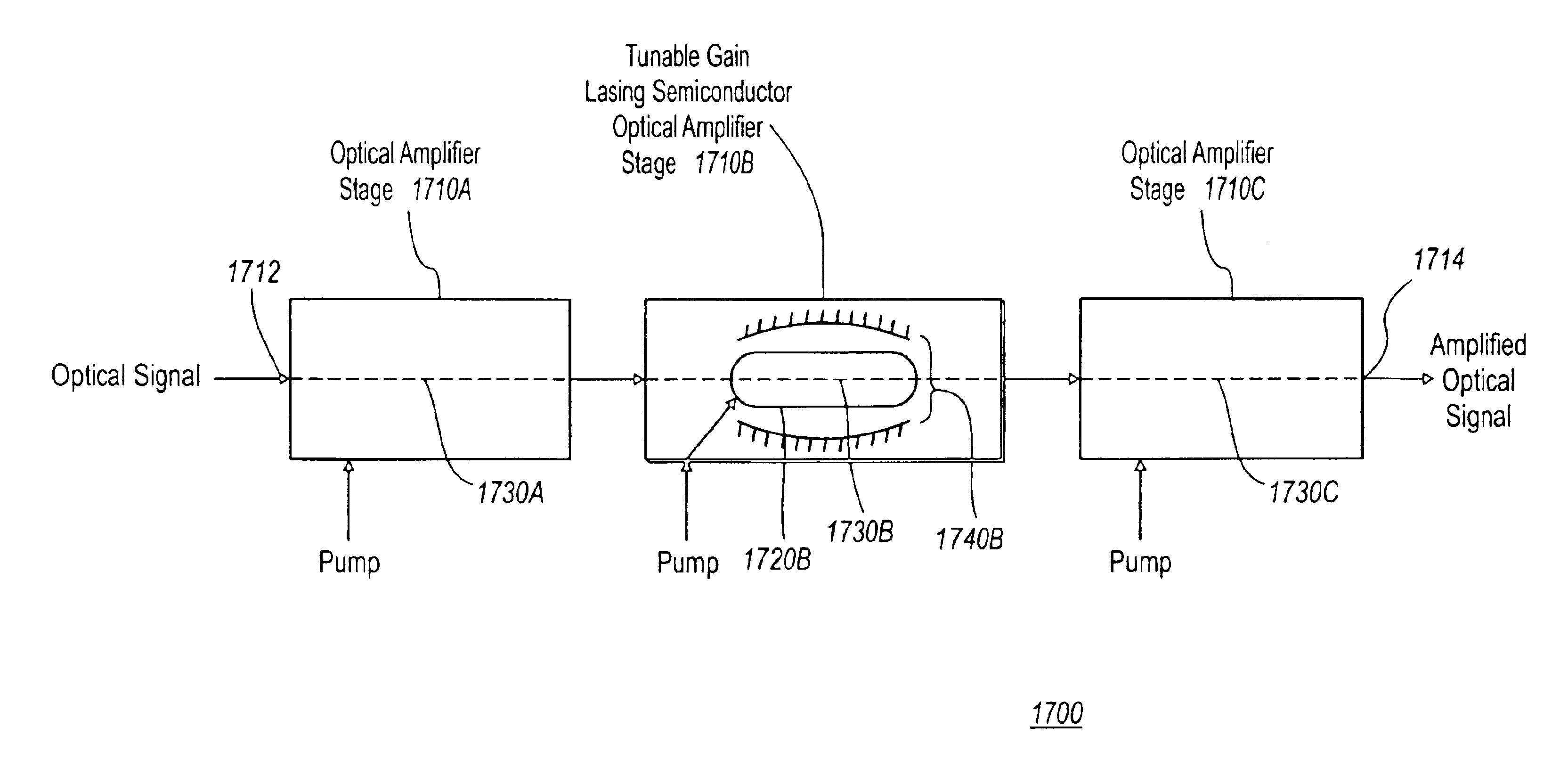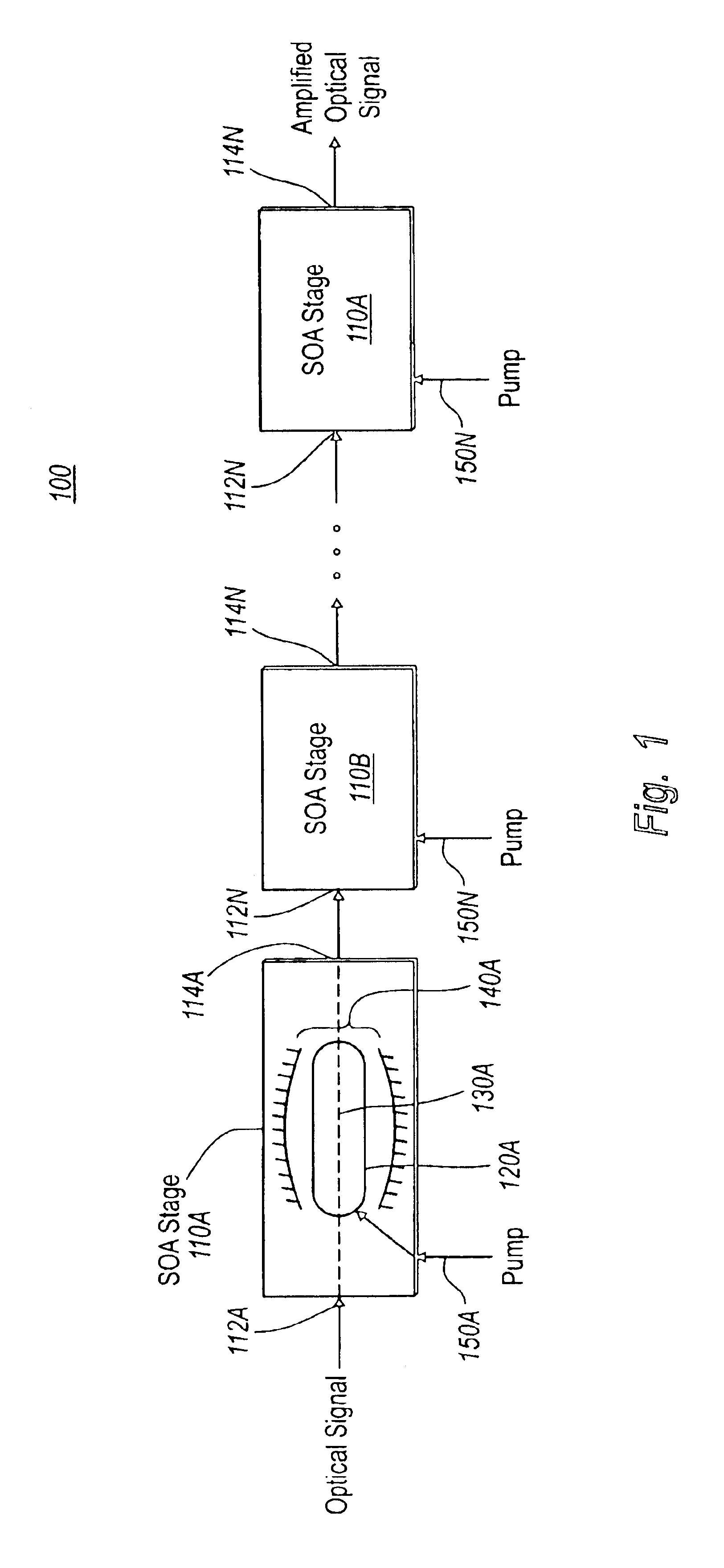Multistage tunable gain optical amplifier
a multi-stage, optical amplifier technology, applied in the structure of semiconductor amplifiers, semiconductor lasers, semiconductor lasers, etc., can solve the problems of degrading the corresponding signal-to-noise ratio, attenuating the optical signal, and affecting etc., to achieve a higher saturable power, improve noise performance, and improve the overall amplification of optical amplifiers
- Summary
- Abstract
- Description
- Claims
- Application Information
AI Technical Summary
Benefits of technology
Problems solved by technology
Method used
Image
Examples
Embodiment Construction
[0050]FIG. 1 is a diagram of a multi-stage lasing semiconductor optical amplifier (SOA) 100 in accordance with the present invention. The SOA 100 includes a number of SOA stages 110A-110N (collectively, SOA stages 110). Each SOA stage 110 has an input 112 and an output 114 and the SOA stages 110 are coupled in series with the output of each SOA stage 110 coupled to the input of the next SOA stage 110. As shown in the detail of SOA stage 110A, each SOA stage 110 includes a semiconductor gain medium 120, with an amplifying path 130 coupled between the input 112 and the output 114 of the SOA stage 110 and traveling through the semiconductor gain medium 120. Each SOA stage 110 further includes a laser cavity 140 including the semiconductor gain medium 120, and a pump input 150 coupled to the semiconductor gain medium 120. The pump input is for receiving a pump to pump the semiconductor gain medium 120 above a lasing threshold for the laser cavity 140. The SOA stages 110 are not identica...
PUM
 Login to View More
Login to View More Abstract
Description
Claims
Application Information
 Login to View More
Login to View More - R&D
- Intellectual Property
- Life Sciences
- Materials
- Tech Scout
- Unparalleled Data Quality
- Higher Quality Content
- 60% Fewer Hallucinations
Browse by: Latest US Patents, China's latest patents, Technical Efficacy Thesaurus, Application Domain, Technology Topic, Popular Technical Reports.
© 2025 PatSnap. All rights reserved.Legal|Privacy policy|Modern Slavery Act Transparency Statement|Sitemap|About US| Contact US: help@patsnap.com



